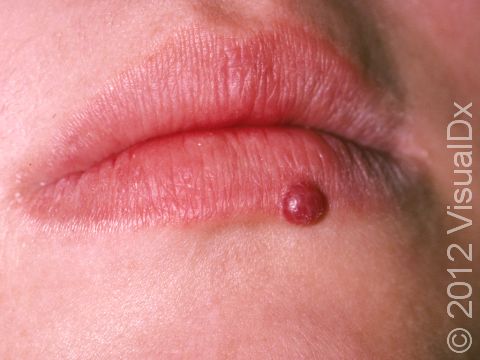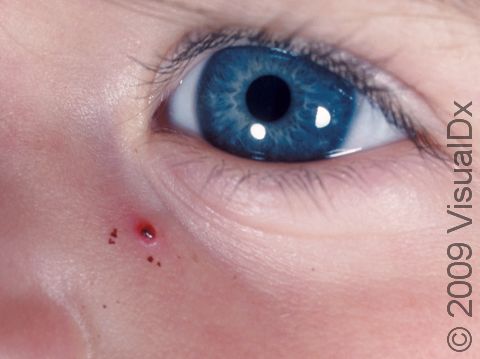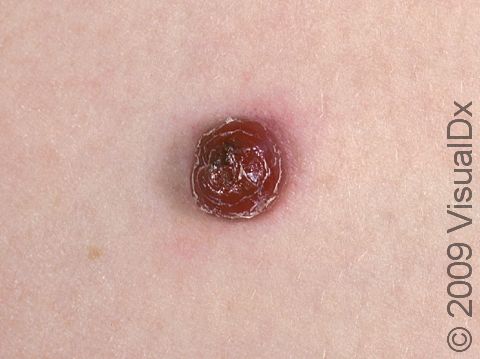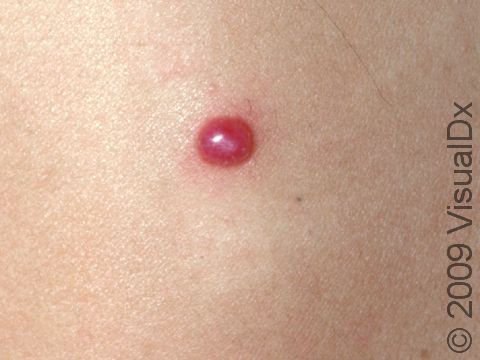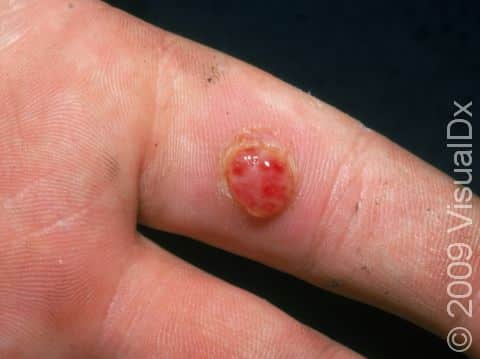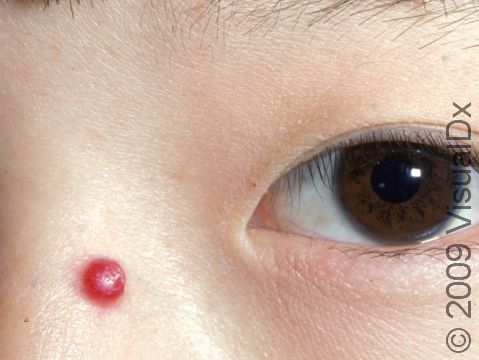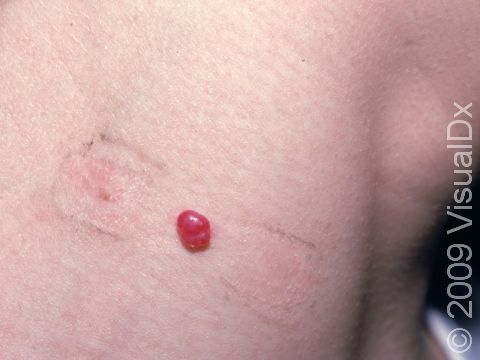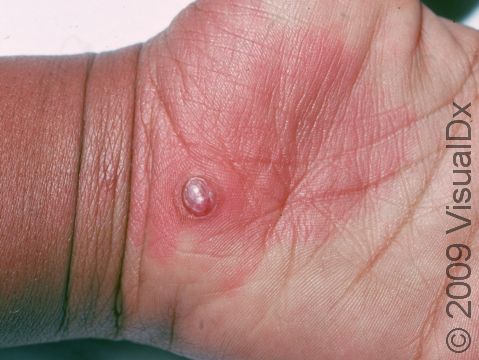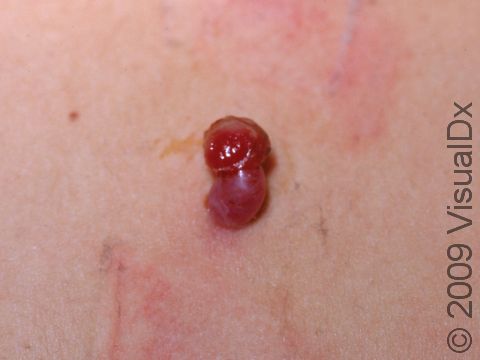Pyogenic Granuloma
Pyogenic granuloma is a common non-cancerous (benign) growth that often appears as a rapidly growing, bleeding bump on the skin or inside the mouth. It is made up of blood vessels and may occur at a location that has had a minor injury.
Who's At Risk?
Pyogenic granulomas occur in people of all races. Women are more frequently affected than men, though male and female children are equally affected.
A pyogenic granuloma is most often seen in:
- Children and young adults
- Pregnant women
- Women taking oral contraceptives
- People taking certain oral retinoids, including isotretinoin or acitretin (Soriatane®)
- People taking protease inhibitors such as indinavir (Crixivan®)
- People undergoing chemotherapy
Signs & Symptoms
The most common locations for a pyogenic granuloma include:
- Hands, fingers, and forearms
- Head, face, and neck
- Lips, gums, and inner mouth (particularly in pregnant women)
- Trunk
Usually, a pyogenic granuloma appear as a beefy, red bump that enlarges rapidly over a few weeks. On average, a pyogenic granuloma is 5–10 mm in diameter. It is likely to bleed easily, and, in some cases, can be tender to the touch. Rarely, multiple lesions of pyogenic granulomas may develop at the same time (simultaneously) at the same location.
Self-Care Guidelines
Any rapidly growing skin growth should be examined by a physician in order to confirm the correct diagnosis. Because pyogenic granulomas may bleed easily, cover the lesion with a bandage until you see your child’s doctor.
Treatments
If the diagnosis of pyogenic granuloma is suspected, the doctor may perform a skin biopsy. The procedure involves:
- Numbing the skin with an injectable anesthetic.
- Sampling a small piece of skin by using a flexible razor blade, a scalpel, or a tiny cookie cutter (called a “punch biopsy”). If a punch biopsy is taken, a suture or two may be placed and will need to be removed 6–14 days later.
- Having the skin sample examined under the microscope by a specially trained physician (dermatopathologist).
Pyogenic granulomas associated with medications usually shrink (regress) when the medicine is stopped or the dosage is lowered. Depending on the size of the pyogenic granuloma, location, and symptoms, the doctor may decide that no treatment is necessary for people who can safely stop or lower the dose of the triggering medication.
Although pyogenic granuloma is a harmless condition, it is frequently removed due to its tendency to bleed, its tenderness to the touch, and its distressing appearance. However, pyogenic granulomas may go away on their own without treatment.
If the pyogenic granuloma is obvious, the physician may choose to treat it immediately after obtaining a biopsy. Such treatments include:
- Scraping and burning (curettage and cauterization). After numbing with local anesthetic, the area is scraped with a sharp instrument (a curette) and burned with an electric needle (cautery)
- Silver nitrate solution
- Topical imiquimod cream (Aldara®)
- Laser treatment
- Freezing with liquid nitrogen (cryotherapy)
- Surgical removal (excision)
Approximately 40% of pyogenic granulomas can come back after treatment, especially those lesions located on the trunk of teens and young adults. A pyogenic granuloma that comes back (recurs) is best treated by surgical removal.
Visit Urgency
Make an appointment with your child’s doctor or a dermatologist if any rapidly growing or bleeding growth develops on your child’s skin or in the areas lining body cavities (mucous membranes) such as the mouth, nose, ears, eyes, or genitalia.
References
Bolognia, Jean L., ed. Dermatology, pp.1823-1824. New York: Mosby, 2003.
Freedberg, Irwin M., ed. Fitzpatrick’s Dermatology in General Medicine. 6th ed, pp.1003, 1009. New York: McGraw-Hill, 2003.
Last modified on August 16th, 2022 at 2:44 pm

Not sure what to look for?
Try our new Rash and Skin Condition Finder
